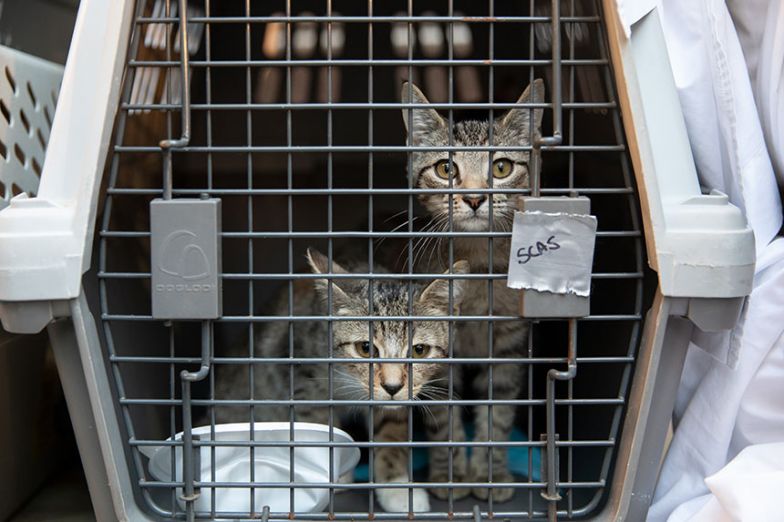News, ideas & inspiration from industry leaders

Q&A: Transport Best Practices with Karen Walsh
You had such great questions during our roundtable on Transport Best Practices last week that we asked presenter Karen Walsh to respond them in the chat box. Following are some highlights shared by The ASPCA’s Senior Director of Animal Relocation.
Q: How can destination shelters better communicate to source shelters about their challenges with animals exhibiting behavioral issues? We deal with the physical constraints of kenneling, managing behavior in the shelter population and placing animals in our communities. Behavior concerns cannot always be “fixed” by being moved to a better-resourced organization.
A: Communication is really key. If you have a group of partners, you can send out an email explaining the challenges. If you have the time, you can have a personal call with each individual shelter. Source shelters are very used to thinking of destination shelters as having greater resources. Unfortunately, that is not the case at the moment in many communities. It is important to speak your truth and support their needs when you can with advice, if nothing else. Like any relationship, caring goes a long way.
Q: What are the best vehicles for transport?
A: The best vehicle is a safely outfitted vehicle that is designed specifically for moving animals. In The Association for Animal Welfare Advancement’s Transport Best Practices document, we have some detail on considerations for vehicle builds. Here are some additional guidelines:
- Climate control and ventilation are key.
- Animals should be loaded safely and securely and each animal should be visualized easily.
- Stacking animals side to side and back to front will not meet the requirements for humane transport.
- A key component of safe transport are secure crates that can be safely stacked.
- Collapsible or pop-up crates should never be used in a transport vehicle.
- When looking for a vehicle yourself, be sure to purchase one that can be easily worked on and maintained
Q: What are recommendations for transporting cats and dogs together?
A: Cats and dogs should be transported separately. Just as we don’t house them together in the same room in the shelter, it is best not to house them in the same vehicle. Stress = disease, and transporting animals of different species together greatly increases stress.
Q: We’re finding that Puerto Rico is struggling to move animals. Commercial airlines often do not prioritize animals, and crates are hard to get. Can anything be done?
A: Airlines are also struggling with a lack of staff and many cancelled flights. It is a difficult time and, sadly, even more difficult when you have the constraints of having to fly animals. Some charter flights are happening in Puerto Rico. Maybe you can take advantage of one of those?
Q: Giardia, coccidia, kennel cough and ever-increasing parvo and even distemper seem to be present in varying levels with every dog who comes off a transport lately. It makes it hard as a destination to manage the costs and the increased length of stay. Are there viable ways to work towards healthier transport?
A: Yes! Only accept animals from sources that are able to meet the basic requirements, including:
- Isolation and separation of animals in the shelter
- Vaccination on intake (and every 2 weeks to 20 weeks)
- Broad-spectrum deworming
- Elimination of external parasites
- Health certificates from a credentialed veterinarian
- Solid cleaning protocols that include a detergent and disinfectant step
Making sure you have that trusting relationship and are able to help your sources meet these requirements will result in healthier transports.
Q: Have any best practices been updated?
A: The Association for Animal Welfare Advancement’s Transport Best Practices document has been recently reviewed and are a current source of best practices. The Association of Shelter Veterinarians will be coming out with some additional guidelines soon.
More? Register and listen to the complete recording of the Roundtable on Transport Best Practices.
Additional Info
Industry Update: Recommendations for Animal Transport
Download the .pdf: Companion Animal Transport Best Practices
Tip of the Week: 10 Best Safety Practices for Animal Transport


